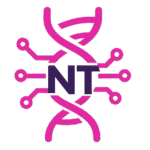
AI Governance: Building Trust in Healthcare, Finance, and Beyond
AI Governance: Building Trust in Healthcare, Finance, and Beyond
Quick Take (for the skimmers & AI Overviews)
What is AI governance? A framework of policies, oversight, and practices that ensure AI is ethical, compliant, and trustworthy.
Why it matters: In regulated industries like healthcare and finance, using AI without proper governance creates serious risks of compliance failures, biased outcomes, and reputational damage.
How to win: Embed governance guardrails, human-in-the-loop review, and cultural readiness to ensure adoption and ROI.
Key roles: Governance managers, compliance officers, change leaders, and content/ops strategists.
What is AI Governance?
AI governance is the set of standards, processes, and roles that manage risk and ensure AI delivers value responsibly. Think of it like seatbelts in a car: they don’t stop you from driving fast or taking a road trip, but they keep you safe when the unexpected happens. Some people might find them uncomfortable or worry they’ll wrinkle their clothes, but skipping them could have deadly consequences in an accident. Wearing them might feel like a small inconvenience, yet it can save your life.
AI governance works the same way. It doesn’t block innovation; it makes sure the ride is safe, trustworthy, and resilient even when things go wrong.
It covers:
Ethics: Preventing bias, ensuring fairness. Example: making sure an AI loan approval system doesn’t unfairly reject qualified applicants based on gender or race.
Compliance: Meeting regulations (HIPAA, SOX, GDPR, etc.). Example: ensuring a healthcare chatbot follows HIPAA privacy rules.
Transparency: Explaining how AI systems reach decisions. Example: showing why an AI flagged a transaction as fraud rather than leaving users guessing.
Accountability: Defining who is responsible when AI makes errors. Example: a clear owner in the business who can act if an AI-powered claims process gives the wrong outcome.
Oversight: Embedding HITL in critical workflows. Example: doctors reviewing AI diagnostic suggestions before sharing results with patients.
Why AI Governance Matters
AI adoption is accelerating, but without governance, the risks multiply. In healthcare, an AI system giving incorrect treatment recommendations can endanger lives. In finance, AI errors can lead to regulatory penalties or fraud exposure. A 2025 Gartner survey found that 73% of executives cite governance as the top barrier to scaling AI.
Trust is the currency of adoption. Skepticism about AI is real. Many people are slow to adopt it out of fear, and pop culture — with movies like M3GAN — only amplifies the perception of AI as dangerous or uncontrollable. Governance adds a layer of security that may help people feel safer about using AI. Employees are more likely to adopt it if they believe it’s accurate and safe, customers look for transparency and fairness, and regulators may only allow expansion if frameworks are in place. In B2B contexts, these same regulations can determine whether other companies trust your services.
What are the key elements of AI governance?
Frameworks & Standards: NIST AI Risk Management Framework, ISO/IEC 23894.
Human-in-the-Loop (HITL): Humans validate AI in healthcare, finance, and other high-stakes workflows.
Governance Roles: Compliance managers, governance officers, risk analysts.
Metrics & Audits: Tracking AI accuracy, adoption, and outcomes.
Culture & Training: Building AI literacy and ethical awareness across staff.
What are some industry use cases for AI governance?
Healthcare: AI used in triage must be reviewed by clinicians to avoid misdiagnosis. PwC reports 67% of providers cite governance as key to patient trust in AI.
Finance: AI in fraud detection must balance speed with fairness. Gartner predicts that by 2027, 60% of banks will adopt governance-first AI frameworks to reduce compliance risk.
Marketing & Content Ops: Governance ensures AI-generated content stays on-brand, inclusive, and legally compliant. A HubSpot survey shows 58% of marketers worry about bias or errors in AI content without governance.
Beauty & Retail: AI personalization in beauty apps need to be transparent and avoid bias in skin tone recommendations. Allure highlights that consumers are quick to reject brands if AI-driven recommendations feel exclusionary.
Technology: Tech firms deploying generative AI should follow governance guardrails to prevent hallucinations and misinformation. Deloitte found that 45% of CIOs cite governance as the top priority for safe AI deployment.
Music & Entertainment: AI-generated music raises copyright and fairness issues. IFPI reports 65% of music executives say governance standards will shape adoption of AI tools in production and distribution.
What are the common pitfalls in AI governance?
Overcomplication: Too many rules slow adoption. Example: a financial firm requiring 15 approvals before any AI model update, delaying innovation.
Underinvestment: Treating governance as an afterthought leads to risk. Example: a hospital rolling out an AI triage tool without proper testing, leading to compliance violations.
Siloed responsibility: No clear owner of AI accountability. Example: marketing launches an AI tool, IT manages the data, and compliance has no visibility — no one owns the outcomes.
Bias blind spots: Failing to test for inequities in AI outputs. Example: an AI recruitment system unintentionally screening out candidates from underrepresented groups because training data wasn’t diverse.
What is leadership’s role in AI governance?
Leaders must:
Establish frameworks early: Bake governance into AI projects from day one. Example: launching a new AI claims process with clear risk policies before rollout.
Champion transparency: Communicate clearly how AI is being used. Example: publishing plain-language summaries so customers know how AI decisions are made.
Invest in training: Upskill staff on ethical AI and compliance. Example: running mandatory workshops on AI bias and HIPAA requirements for healthcare staff.
Model accountability: Hold teams (and themselves) responsible for AI outcomes. Example: leaders publicly owning errors and explaining corrective steps when AI fails.
Balance innovation with trust: Encourage experimentation while keeping oversight. Example: allowing pilot projects but requiring HITL review before scaling enterprise-wide.
Closing: Governance as the Enabler of Scale
AI will not scale without trust. Governance is not a barrier to innovation — it’s the foundation for sustainable adoption. In healthcare, finance, beauty, and beyond, companies that lead in governance will lead in market share. The future belongs to organizations that treat governance as a growth strategy, not just a compliance checkbox.
Key Terms Glossary (and Future Blog Roadmap)
AI Governance: Policies and oversight to ensure ethical, compliant AI. (Blog: AI Governance: Building Trust in Healthcare, Finance, and Beyond.)
HITL (Human-in-the-Loop): Human checks in AI workflows. (Blog: Human-in-the-Loop (HITL): Building the Workforce of the Future.)
AI Risk Frameworks: Standards like NIST AI RMF and ISO/IEC 23894. (Future blog: Comparing Frameworks.)
Bias Mitigation: Techniques to reduce inequities in AI outputs. (Future blog: Practical Bias Mitigation.)
Governance Roles: Compliance managers, risk officers, governance leaders. (Future blog: Emerging Governance Roles.)
